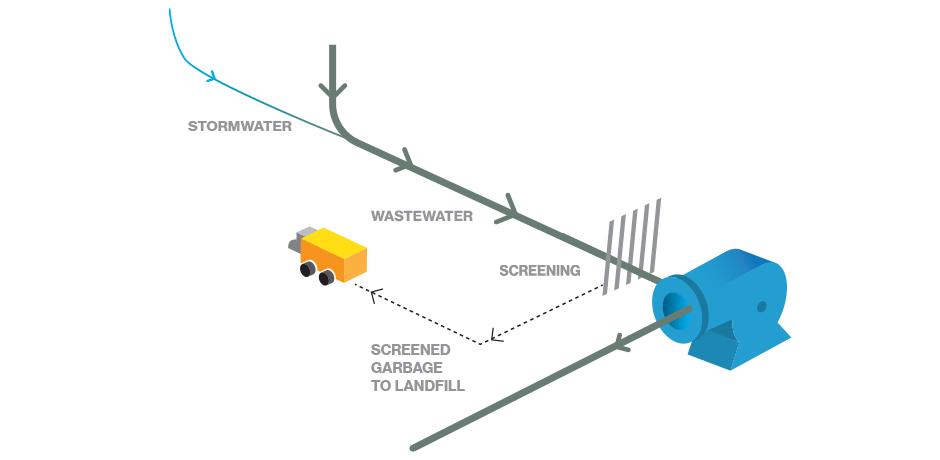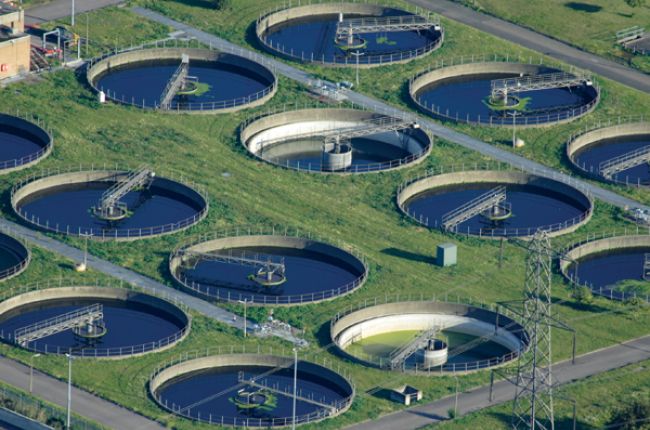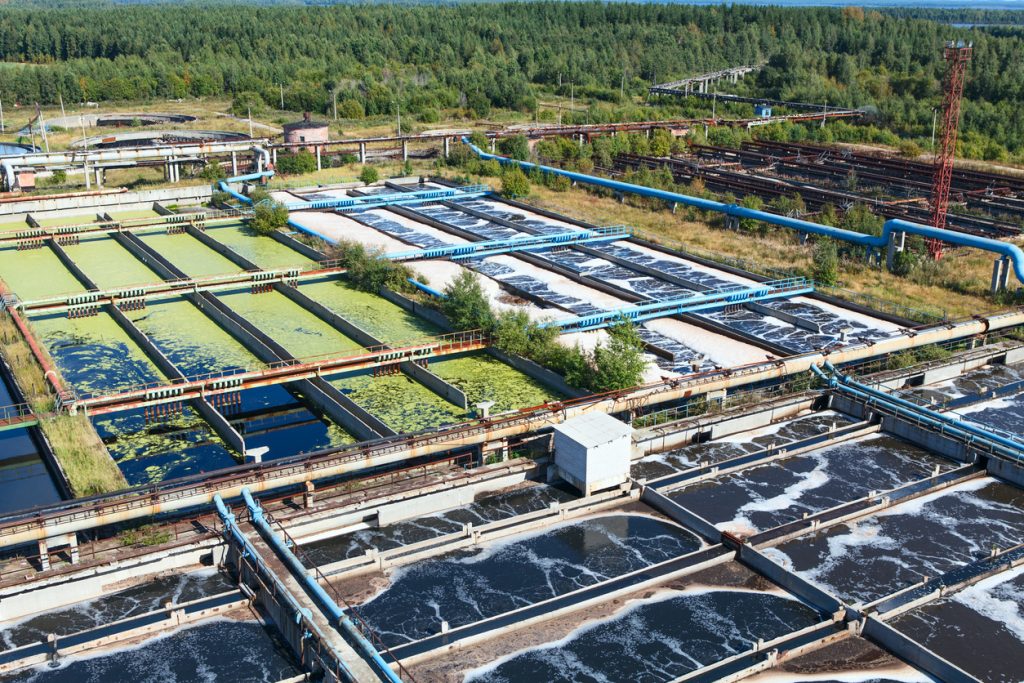Ecological Impact of Waste Water Treatment: What You Required to Know
Wiki Article
Strategic Approaches to Enhance Drainage Therapy Efficiency and Lessen Environmental Impact
In the world of waste water treatment, the mission for boosted performance and lowered ecological effect is a perpetual obstacle that demands strategic services. The combination of sophisticated therapy technologies, energy-efficient procedures, source recuperation strategies, enhanced nutrient removal strategies, and smart tracking and control systems represents a complex framework for dealing with these pushing problems.Advanced Treatment Technologies
Advanced membrane filtering systems have actually reinvented sophisticated wastewater treatment processes, significantly improving the elimination of contaminants. These innovative systems function forcibly water via a semi-permeable membrane, properly separating impurities from the water stream. The membrane layer's tiny pores catch contaminants such as microorganisms, infections, and put on hold solids, permitting only purified water to go through. This technology has actually verified to be very efficient in removing a wide variety of pollutants, including pharmaceuticals, heavy metals, and natural substances, which are typically testing to eliminate via standard therapy methods.In addition, membrane purification systems supply various advantages over standard treatment methods. They need much less room, generate higher-quality effluent, and are more immune to variations in influent water top quality. Additionally, these systems are very versatile and can be quickly incorporated right into existing therapy plants or used as standalone devices for decentralized applications. As the need for clean water proceeds to rise, the fostering of innovative membrane filtering technologies is necessary to make certain sustainable and reliable wastewater therapy practices.
Energy-Efficient Processes
The assimilation of energy-efficient processes in wastewater treatment systems is critical for maximizing source usage and lowering functional expenses. By implementing energy-efficient innovations, therapy plants can dramatically lower their carbon footprint and overall environmental impact. One key strategy to enhancing energy efficiency in wastewater treatment is the usage of sophisticated oygenation systems, such as great bubble diffusers or surface aerators, which can improve oxygen transfer performance and lower power intake. Furthermore, including power recovery systems, like anaerobic food digestion for biogas manufacturing or using excess warm for thermal procedures, can assist counter power requirements and advertise sustainability.Additionally, optimizing process control and automation with using advanced sensors and checking systems can boost general power performance by readjusting procedures in real-time based upon actual need and conditions. Carrying out energy audits and on a regular basis keeping track of power efficiency indications are vital practices to identify locations for improvement and track energy-saving initiatives effectively. Overall, the adoption of energy-efficient processes in wastewater treatment not just profits the environment however likewise adds to long-lasting cost financial savings and operational sustainability.
Resource Healing Approaches
With a focus on enhancing source use and sustainability in wastewater therapy systems, the application of source healing methods arises as a crucial element in boosting operational performance. Source recuperation strategies in wastewater treatment involve the identification and removal of useful sources from the waste stream, therefore transforming what was when taken into consideration waste check my reference right into a valuable asset. By applying source recuperation methods such as nutrient elimination and healing, energy generation from organic issue, and the production of multiple-use water, wastewater therapy plants can lessen ecological influence while maximizing effectiveness.
Boosted Nutrient Elimination Methods
Executing advanced nutrient removal techniques is essential for maximizing the effectiveness of wastewater treatment systems. Improved nutrient elimination plays an important role in decreasing the ecological influence of cured effluent discharged right into water bodies. One of the key techniques used for boosted nutrient removal is the process of biological nutrient removal (BNR), which entails the removal of nitrogen and phosphorus with biological procedures. This can be achieved with making use of specialized bacteria that can transform nitrogen compounds into inert nitrogen gas through denitrification, and collect phosphorus within their cells with a process called boosted biological phosphorus elimination (EBPR)
In enhancement to BNR, advanced therapy approaches have a peek here such as membrane layer bioreactors (MBRs) and built wetlands can additionally be utilized to enhance nutrient elimination efficiency. MBRs utilize membrane layers to accomplish top quality effluent requirements by properly eliminating nutrients and suspended solids. Constructed marshes simulate all-natural wetland processes to eliminate nutrients via plant uptake, microbial task, and sedimentation. By integrating these sophisticated nutrient elimination strategies right into wastewater treatment sectors, systems and districts can successfully reduce nutrient pollution and secure the setting.
Smart Tracking and Control Solution
Using advanced modern technology, the assimilation of smart tracking and control systems changes the operational efficiency of wastewater therapy facilities. These systems integrate innovative sensors and information analytics to continuously check vital specifications such as pH degrees, turbidity, dissolved oxygen, and flow prices in real-time. By accumulating and evaluating this information, operators can acquire beneficial insights right into the efficiency of the therapy processes, allowing proactive adjustments to enhance treatment efficiency.Smart monitoring and control systems likewise support remote monitoring capacities, enabling drivers to access real-time data and control functions from off-site areas. This remote access enhances functional adaptability and responsiveness, allowing swift interventions in instance of system malfunctions or fluctuations in influent quality. The anticipating maintenance capabilities of these systems aid protect against tools failings and minimize downtime, ultimately improving the general reliability of wastewater therapy procedures.
Final Thought
To conclude, calculated methods such as innovative treatment innovations, energy-efficient procedures, source recovery methods, improved nutrient removal methods, and smart surveillance and control systems play a critical role in boosting wastewater treatment effectiveness and lessening environmental influence. By executing these techniques, wastewater treatment plants can boost their total efficiency, lower energy consumption, recoup important resources, and make sure compliance with ecological laws. These strategies are essential for effective and sustainable wastewater administration techniques.
In conclusion, critical methods such as advanced therapy technologies, energy-efficient procedures, resource healing strategies, enhanced nutrient removal methods, and smart tracking and control systems play an essential function in boosting wastewater therapy effectiveness and reducing environmental impact.
Report this wiki page